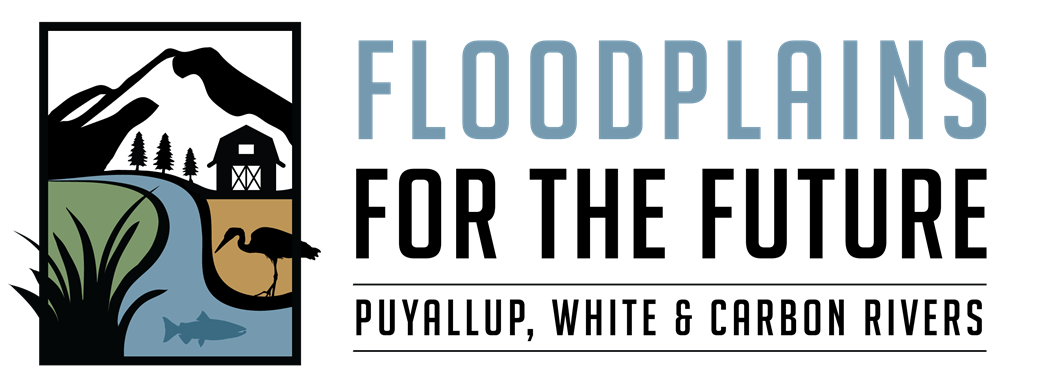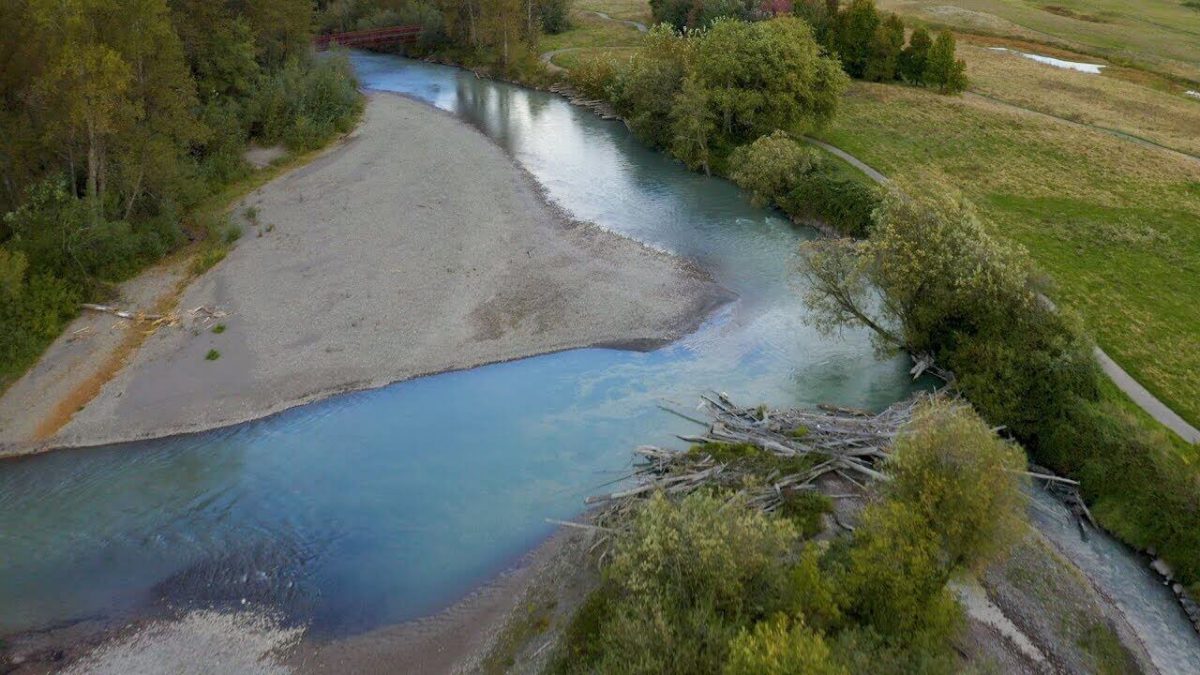South Prairie Creek: Bringing Fish Home and Planning for More

In 2021, FFTF partners increased their focus on the South Prairie Creek reach of the watershed. South Prairie Creek, a tributary of the Carbon River, may be misnamed – despite being labeled a creek, its flows can be as high as 10,000 cubic feet per second. South Prairie Creek is a primary producer of Fall Chinook and Steelhead and also provides important habitat for Bull Trout. Throughout conversations held in 2021, FFTF partners articulated goals for flood risk reduction, salmon recovery, and agricultural viability and explored potential future actions to provide benefits for all three interests in this reach. FFTF partners also worked together on complex property acquisitions that will be key to success in the reach.
In addition, 2021 marked the successful completion of the South Prairie Creek Preserve Floodplain Restoration project, a 7-year initiative with an intersection of farm, fish, and flood benefits. The project was led by the Pierce Conservation District and South Puget Sound Salmon Enhancement Group with substantial contributions from other organizations. Several partners collaborated to design and implement extensive restoration activities across 65 acres, successfully restoring important habitat for fish species, reconnecting the natural floodplain, and maintaining opportunities for agricultural services in the reach.
The South Prairie Creek restoration effort was a massive undertaking. Partners installed 118 engineered log jams, demolished 9 buildings, re-forested 10,700 native plants and trees, and re-created a half-mile of river channel habitat. At this scale, the project will have real impact and contribute to positive changes for the landscape well into the future. Fish were spotted returning to the creek shortly after partners completed construction. The success is attributed to the contributions and dedication of several partners who worked together to restore the land and re-establish critical habitat.
Unlike other floodplain reconnection projects completed in recent years, the South Prairie Creek Preserve Floodplain Restoration project was not funded with Floodplains by Design funds. Rather, the project was funded through 12 grant programs, including local, state, and federal sources. It is an example of watershed partners diversifying funding strategies to achieve more benefits.
This project has set the stage for expanding this type of collaborative, large-scale restoration work throughout South Prairie Creek and the rest of the Puyallup River watershed and is a proven example of how partners can work together to leverage resources. Building on this project’s success, funding has been secured from the Puyallup Tribe, Washington Salmon Recovery Funding Board, and Floodplains by Design to develop more projects in the watershed.

